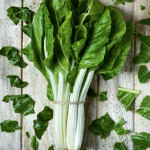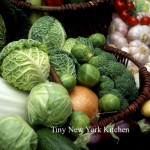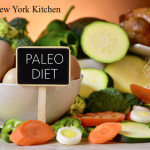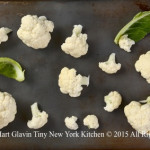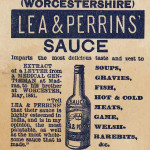While the Nutrition Fact label can tell you a lot about a food, you need to check the ingredients list to see what you’re really eating. Is your breakfast cereal made with whole grains or does your favorite salad dressing contain oil that is high in saturated fat, for example.
By law, ingredients lists must be ordered by weight. The heaviest ingredient goes first, followed by the next heaviest, and so on. It is not a good sign if sugar is the first ingredient in a cereal or when bad fats like partially hydrogenated soybean and cottonseed oils are the third ingredient listed on a can of biscuit dough.
Below is a list of common phrases found on many food packages:
Cholesterol Free or No Cholesterol: Don’t be fooled by the words No Cholesterol written across the label of a jar of peanut butter or bottle of canola oil. If you turn to the Nutrition Facts label, you’ll see that no brand of either food has cholesterol – and never did! Only foods of animal origin contain cholesterol. But manufacturers hope you don’t know that.
Light: This word is used to describe fat content, taste, or color. If the manufacturer is describing the fat content as “light,” the product has at least 50 percent less fat than the original. The label must also say “50% less fat than our regular product.” “Light” olive oil, on the other hand, describes the oil’s color. The oil is as caloric as regular olive oil, but has been processed to remove some of its flavor. A muffin mix can say “light and fluffy” as a way to describe its texture or consistency.
Low-Fat or Fat-Free: Low-fat products must contain 3 grams or less fat per serving and fat-free products must have less than 0.5 grams of fat per serving. But check the number of calories – that number could be very high. It is easy to gain lots of weight eating fat-free cookies because they are loaded with sugar.
Low Sodium or Light In Sodium: This means that the sodium was cut by at least 50 percent over the original product. Be careful when using a “low” version of a super-high-sodium food such as soy sauce or soup. You can still end up consuming a lot of sodium. Check the numbers on the Nutrition Fact Label.
Sugar-Free, No Added Sugars, Without Added Sugars: A sugar-free chocolate candy may not contain a speck of sugar, but it’s still got plenty of fat and calories. Be sure to check out the Nutrition Facts label to know how many calories and grams of saturated fat you’re consuming.
Sweetened With Fruit Juice, Fruit Juice Sweetener, or Fruit Juice Concentrate: These sweeteners are made by reducing fruit juice (usually grape juice) into a sticky sweetener. These sweeteners are not nutritious. They are just like sugar.
“Work With What You Got!”
© Victoria Hart Glavin Tiny New York Kitchen © 2017 All Rights Reserved
The message is simple: Eat well to stay well. The good news is that you don’t need a graduate degree in nutrition to eat healthfully on a daily basis. What follows are some guidelines and information to help you make informed decisions about what you and your family should eat to maintain a balanced diet.
*Consume a variety of nutrient-dense foods and beverages within the basic food groups. Choose foods that limit your intake of saturated and trans fats, cholesterol, added sugars, salt, and alcohol.
*Engage in regular physical activity and reduce sedentary activities to promote health, psychological well-being, and a healthy body weight.
*Consume three or more 1 ounce equivalent servings of whole grains each day.
*Consume 3 cups of fat-free or low-fat milk or equivalent dairy products per day.
*Derive less than 10 percent of your calories from saturated fat and less than 300mg of cholesterol per day. Avoid trans fats.
*Keep your total fat intake between 20 and 35 percent of your calories, with most fats coming from polyunsaturated and monounsaturated sources, such as fish, nuts, and vegetable oils.
*Choose fiber-rich fruits, vegetables, and whole grains each day.
*Consume less than 2,300mg (about 1 teaspoon) of sodium each day.
*Women who choose to drink alcohol should limit themselves to one drink per day; men should limit themselves to no more than two drinks per day.
“Work With What You Got!”
© Victoria Hart Glavin Tiny New York Kitchen © 2017 All Rights Reserved
Paleo Diet
The Paleo Diet (short for Paleolithic) is fashioned around the eating habits and available foods of our hunter-gatherer ancestors. These ancestors had to nourish themselves with the meat, fish, fruits, vegetables, nuts, and fats available to them in nature. With the benefit of large supermarkets, it’s easy today to mimic these foods in wider variety. Specific recommendations for eating Paleo will vary; however, the main ideas are the same: Reduce the risk of debilitating diseases and optimize health by eating whole, fresh, unprocessed foods and avoid foods that were not available prior to the advent of modern agriculture.
Research studies looking at the Paleo Diet have noted that eating a Paleo Diet for a short term improved the glucose control and lipid profiles in people with type 2 diabetes, compared to eating a diet containing low-fat dairy, moderate salt intake, whole grains, and legumes. Additional research indicates similar results may be possible in people without type 2 diabetes as well. The Paleo diet may result in higher levels of satiety (fullness) throughout the day when compared with a low-fat, low-calorie diet.
Paleo Do’s
Eat plenty of non-starchy vegetables and fruits.
Make fresh meat, poultry, fish, and seafood your primary sources calories.
Avoid highly processed meats that contain preservatives, artificial flavors, and sugar, such as some sausages, bacon, deli meats, and smoked fish products.
Consume nuts and seeds.
Use coconut oil, grass-fed butter, olive oil, avocado oil, nut and seed oils, and animal fats, such as goose fat or duck fat, for cooking and eating.
Balance the intake of acid-producing foods (meats, fish, salt, and cheese) with base-producing foods (fruits and vegetables) for optimal health.
Use sea salt to season foods, but try to decrease sodium intake in general.
Paleo Don’ts
Consume highly processed packaged foods.
Get heavy handed with the salt shaker.
Eat grains of any kinds. Quinoa, bulgur, rice, wheat, bread, pasta, etc., are all out.
Consume sugar (including honey and maple syrup), sweets, candy, or desserts.
Use artificial sweeteners, such as monk fruit extract, stevia, NutraSweet or Equal (aspartame), Splenda (sucralose), or sugar alcohols, such as xylitol, sorbitol, or maltitol.
Eat legumes, beans, peas, lentils, or soy, or foods make from soybeans.
Use canola or soybean oils or consume hydrogenated oils (trans fats).
Consume dairy, with the exception of fermented dairy or raw milk cheese on occasion.
“Work With What You Got!”
© Victoria Hart Glavin Tiny New York Kitchen © 2016 All Rights Reserved
Cauliflower
Whether roasted, mashed, raw or added to pasta dishes, there’s something so comforting about cauliflower’s mild, creamy flavor. Plus, it’s one of the most nutritious vegetables around. What’s not to love?
Cauliflower is a member of the cruciferous family, along with broccoli, cabbage, and kale. These vegetables are an important part of a heart-healthy lifestyle, high in nutrients and fiber and very low in calories.
It’s easier than you might think to separate a whole cauliflower into florets, but if you’re really pressed for time, take advantage of prepared fresh or frozen cauliflower.
To prep cauliflower you will need to first remove the cauliflower’s leaves and cut out the core. Then break into evenly sized florets, cutting any very large ones. Add to a pot of boiling salted water and cook for about 5 minutes. Drain thoroughly. Rinse with cold water if you plan on using it later.
Cauliflower works great as a replacement for higher starch foods like rice, couscous, and potatoes. Steam and mash it to replace potatoes or pulse it in a food processor to create cauliflower “rice” that can be sautéed or steamed and served with curry or chili.
“Work With What You Got!”
© Victoria Hart Glavin Tiny New York Kitchen © 2015 All Rights Reserved
Season With Worcestershire Sauce
Think of Worcestershire sauce as the “Fish Sauce” of American cooking. Worcestershire sauce is probably one of the most underused condiments. The sauce is a fermented mix of vinegar, molasses, anchovies, and other seasonings that adds great flavor to a dish without adding many calories. I often add a splash to salad dressings, marinades, and sauces, or use it to season ground meat for meatloaf or burgers. Just go easy because it’s high in sodium.
"Work With What You Got!"
© Victoria Hart Glavin Tiny New York Kitchen
We've all heard the saying, "An Apple A Day Keeps the Doctor Away." Well it's the truth! A large apple contains 5 grams of fiber, which maintains healthy glucose levels, reduces the risk of heart disease, and promotes good digestion. Furthermore, an apple is fat and cholesterol-free, and low in sodium and calories, which helps one maintain a healthy weight.

